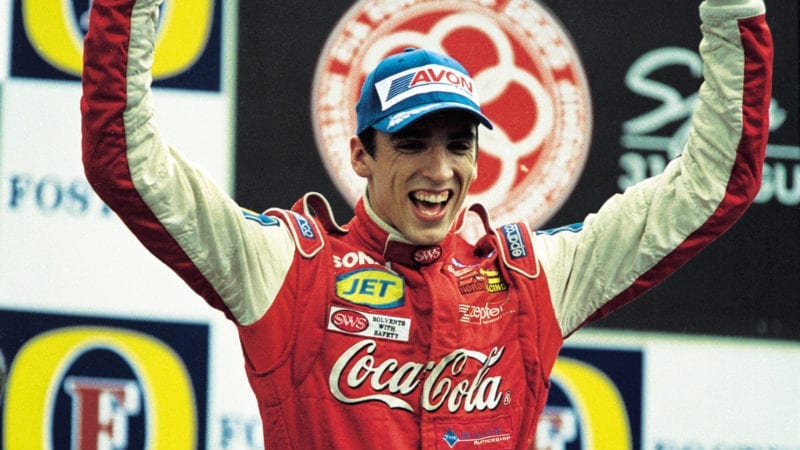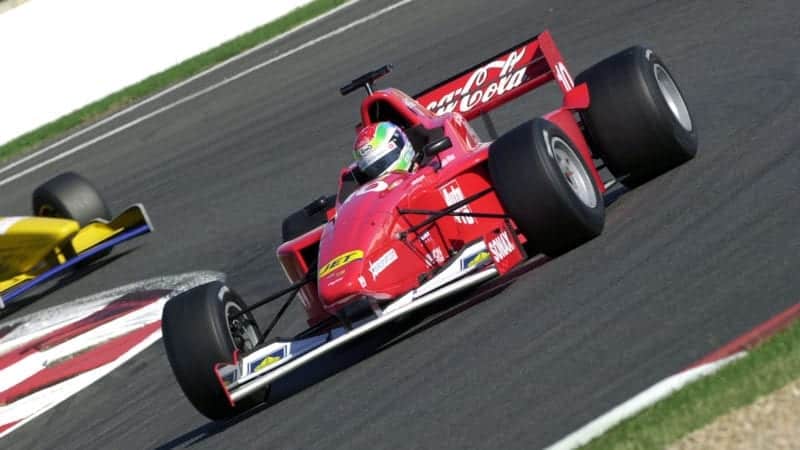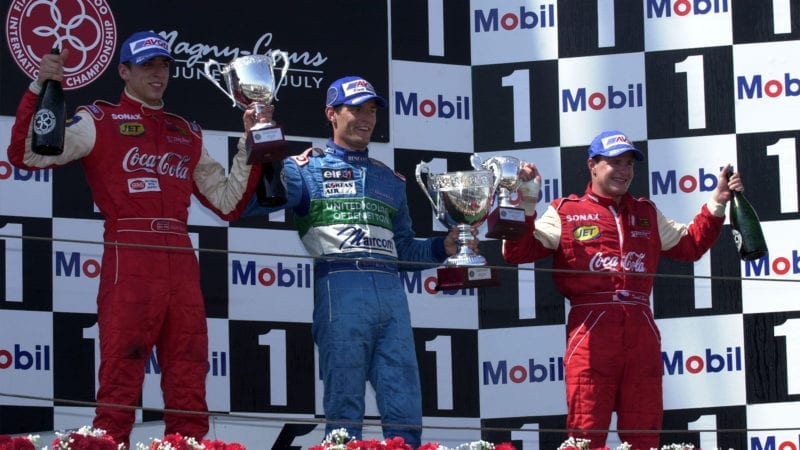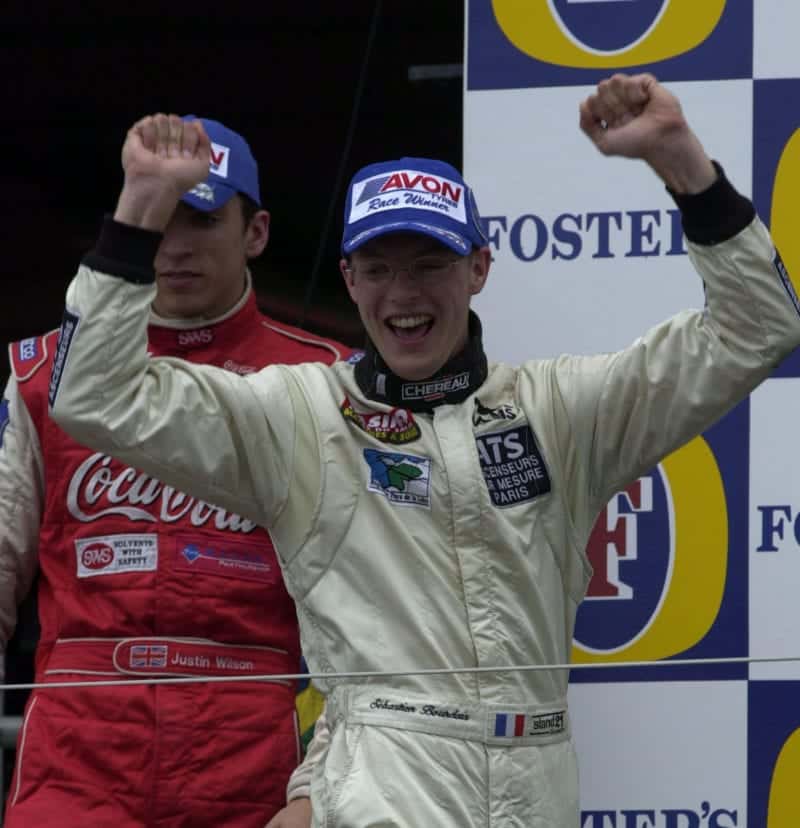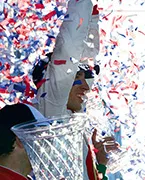Above them all was Wilson, with three wins and a remarkable six second places – a level of consistency that was utterly against the grain in quirky and tricky F3000. His final tally of 71 points over 12 rounds exceeded what Juan Pablo Montoya managed in ’98 for the same number of races. Meanwhile Webber, who had loomed to just one point behind Wilson after a win at Magny-Cours, ended up runner-up – but a massive 32 points short of the champ, having failed to score in the final four rounds. This was a proper rout.
The best memory from that year? There are a couple. Wilson’s fortuitous win at Interlagos, when three drivers ahead of him earned stop-go penalties for stupid safety car transgressions. It was the first for a British International F3000 driver since Jamie Davies in 1997 and his own first victory since the FPA days of ’98 – and he marked it by ‘doing a Vittorio Brambilla’ and spun in excitement after taking the flag!
As the summer wore on and his accomplished approach continued to pay dividends, I’d ask him at every race: “Any F1 interest yet?”. Each time he’d shrug and shake his head. No one appeared to be taking any notice, and it seemed hugely unfair. So at the Nürburgring I convinced him to pose for a photo outside the gates of the F1 paddock, sitting cross-legged and looking glum as passers-by (me and manager Palmer) ignored him. Cheesy, yes, but I think he appreciated the intention and sentiment.
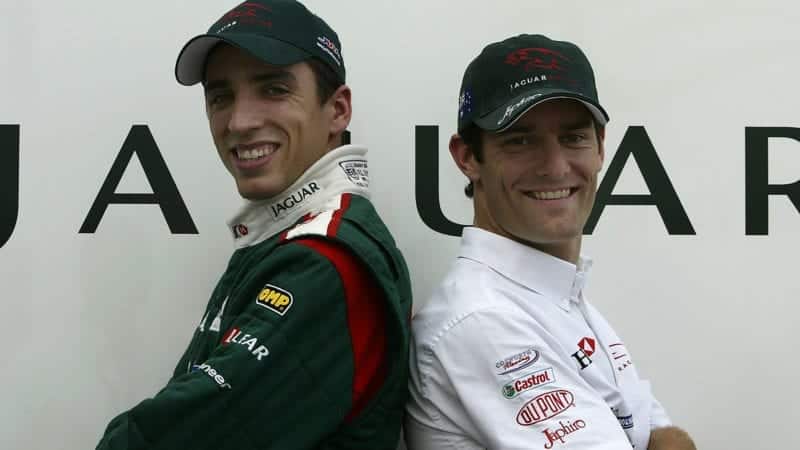
2003 saw a reunion with Webber at Jaguar’s F1 team
Mark Thompson/Getty Images
At season’s end, after his F3000 crown was secured with two races still to run by a superb victory at the Hungaroring, Wilson and Palmer finally attracted the attention of Jordan. The subsequent tests didn’t lead to a drive and the next season he somehow found himself left with nothing more than a World Series by Nissan ride in Spain – but then in 2003 gauche Australian Paul Stoddart recognised a like-minded outsider and hired him for Minardi. Finally, Justin had his chance – even if it was in a back-of-the-grid car.
Mid-season, he defected to Jaguar in place of his struggling old F3000 rival Pizzonia – and faced, of all people, Webber. Over just five races, coming in beside a clever driver already well established at the team, it was an uneven contest and hardly amounts to a definitive verdict on his potential. Of course it doesn’t. But that’s F1 for you.
Still, he scored a point for eighth place at the US Grand Prix (suitable race, given what was to come), and there’s also a fabulous bit of film of him running in a session at Hockenheim, when he was briefly faster than Michael Schumacher. The commitment and ragged-edge excitement of his efforts to tame the lame cat – that’s a sniff of Wilson at his best.
I saw much less of him when he went to the States and found his true home in Indycars. But I loved how the Americans adopted him, recognised the jewel that F1 had rejected – and nicknamed him “Badass”. What, they don’t do irony over there? C’mon…
Justin died in 2015 at Pocono when debris from another crashed car struck his helmet. Six years on from that unspeakable tragedy, the pain of his loss remains acute, most obviously for his wife and children, but also for his wider family and many friends. For the rest of us, when even an only vaguely diverting press release can inadvertently trigger happy memories of such a special man, it’s a sure sign that Justin will never be forgotten.
